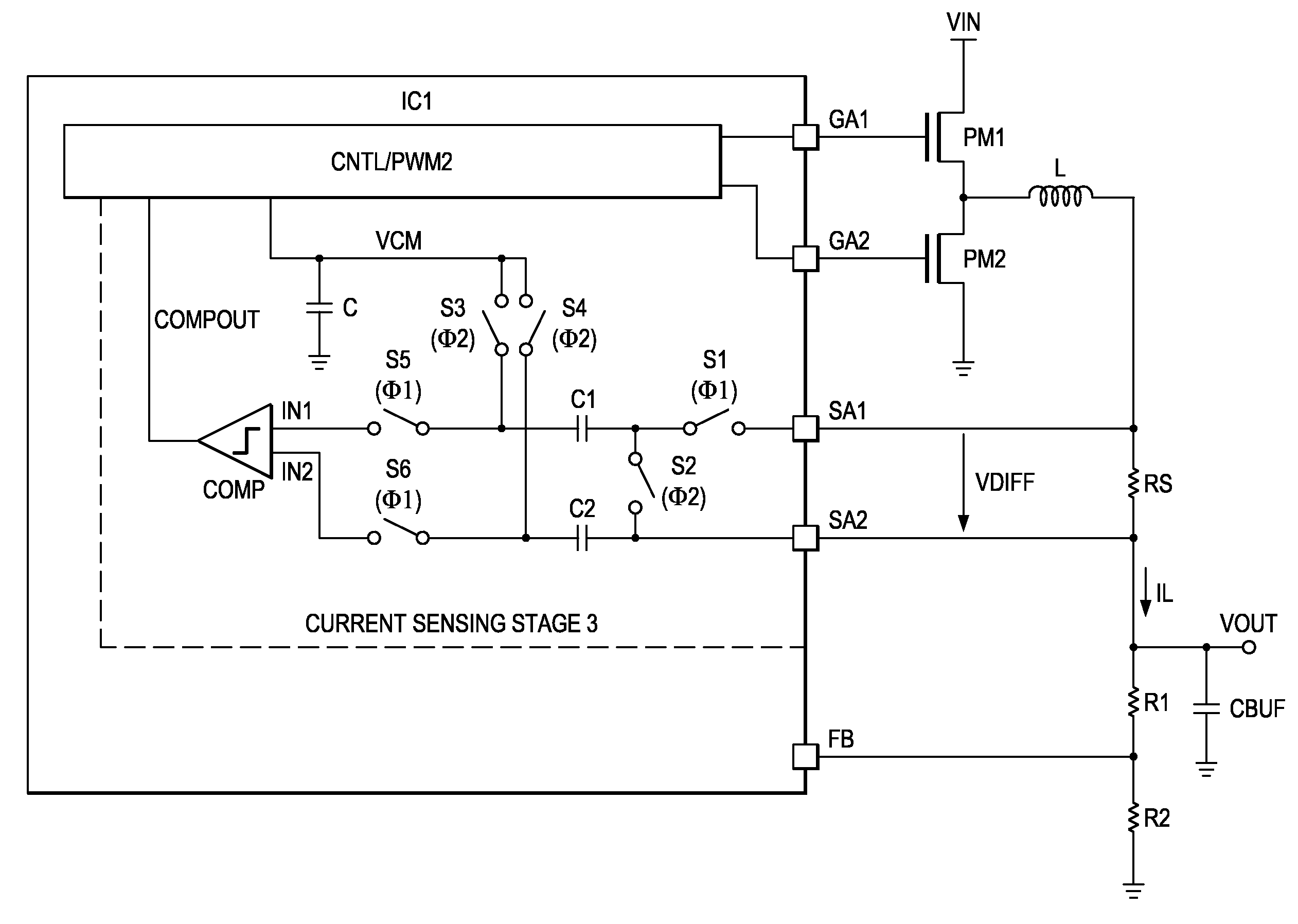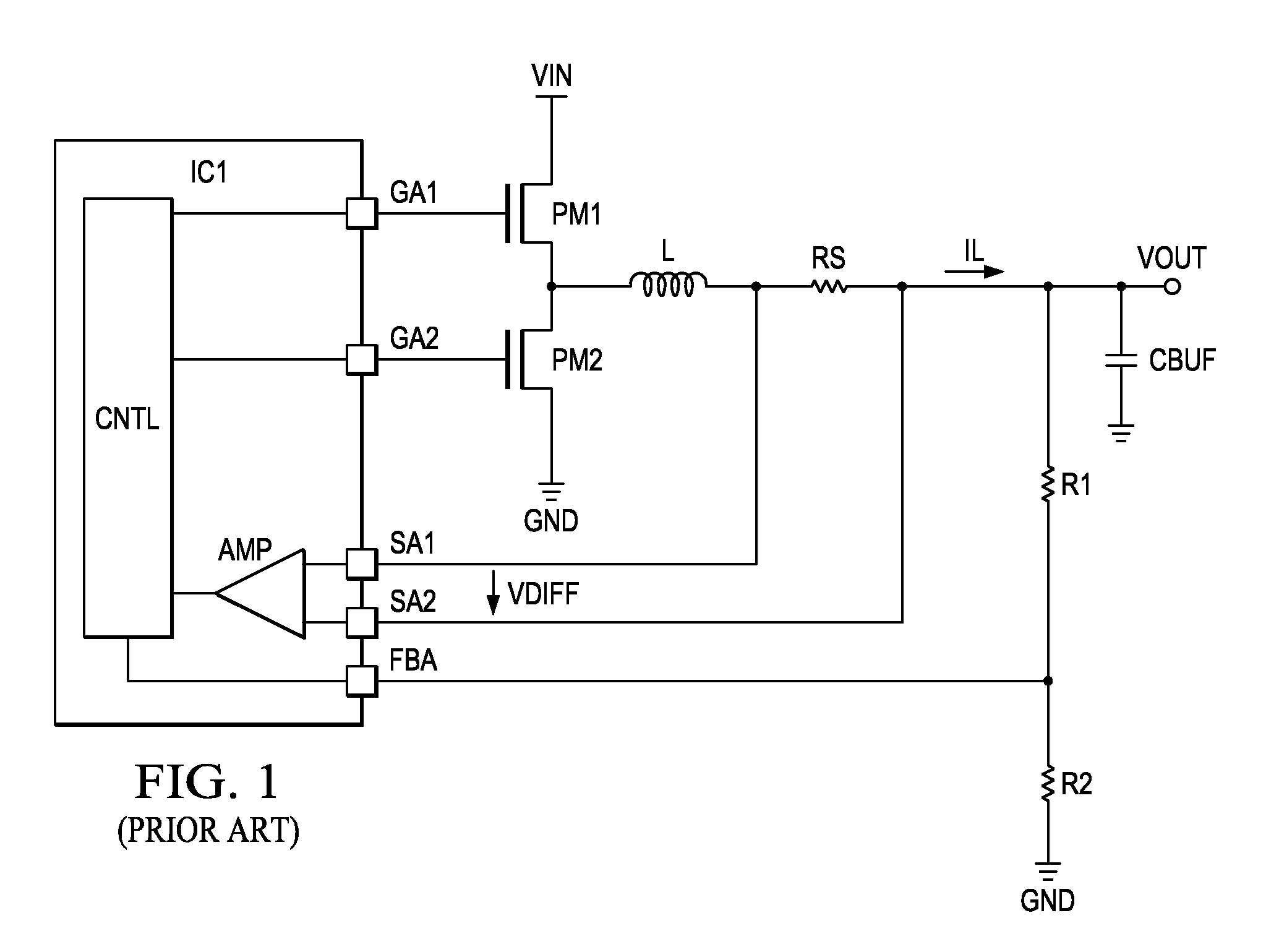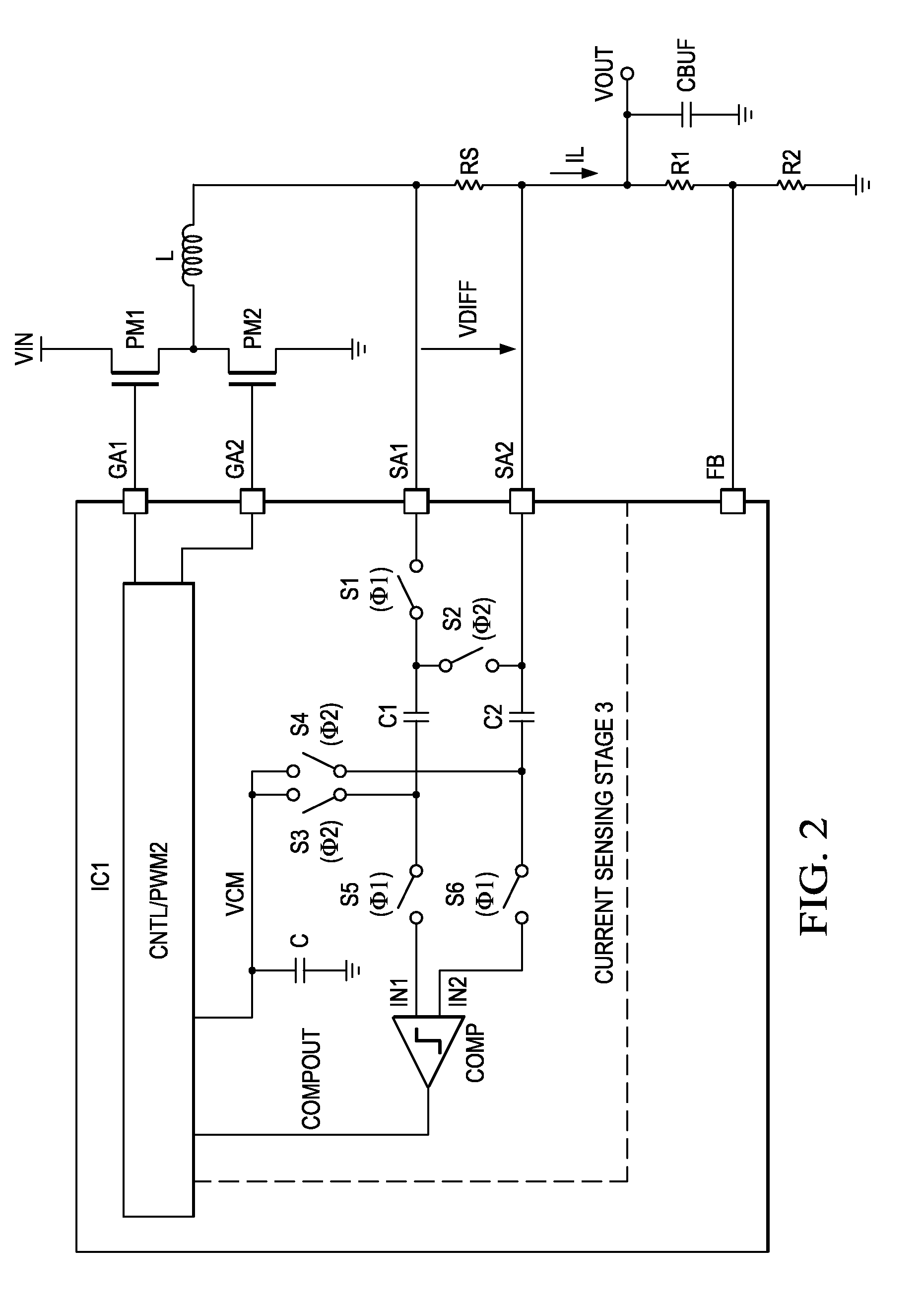Switched mode power supply with current sensing
a power supply and current sensing technology, applied in the field of switched mode dcdc conversion, can solve problems such as adverse effects, and achieve the effect of less complex and high precision
- Summary
- Abstract
- Description
- Claims
- Application Information
AI Technical Summary
Benefits of technology
Problems solved by technology
Method used
Image
Examples
Embodiment Construction
[0032]FIG. 2 shows a simplified circuit diagram of an embodiment of the invention. As described with respect to FIG. 1, control stage CNTL provides control signals for switching power MOSFETs PM1 and PM2 ON and OFF. An output voltage VOUT is generated on an output node and may be buffered with a buffer capacitor CBUF. A shunt resistor RS is coupled into the output path. A load current IL which is supplied from the inductor L to the output node VOUT may then cause a voltage drop across shunt resistor RS. There is a voltage difference VDIFF between nodes SA1 and SA2 which may be input pins of the integrated circuit 1. The current sensing stage 3 includes capacitively coupled comparator COMP. A first input IN1 and a second input IN2 of the comparator COMP are now selectively and capacitively coupled to nodes SA1 and SA2. Comparator COMP detects a magnitude of the voltage difference and / or a relationship between the voltage levels on the first node SA1 and the second node SA2 and provid...
PUM
 Login to View More
Login to View More Abstract
Description
Claims
Application Information
 Login to View More
Login to View More - R&D
- Intellectual Property
- Life Sciences
- Materials
- Tech Scout
- Unparalleled Data Quality
- Higher Quality Content
- 60% Fewer Hallucinations
Browse by: Latest US Patents, China's latest patents, Technical Efficacy Thesaurus, Application Domain, Technology Topic, Popular Technical Reports.
© 2025 PatSnap. All rights reserved.Legal|Privacy policy|Modern Slavery Act Transparency Statement|Sitemap|About US| Contact US: help@patsnap.com



